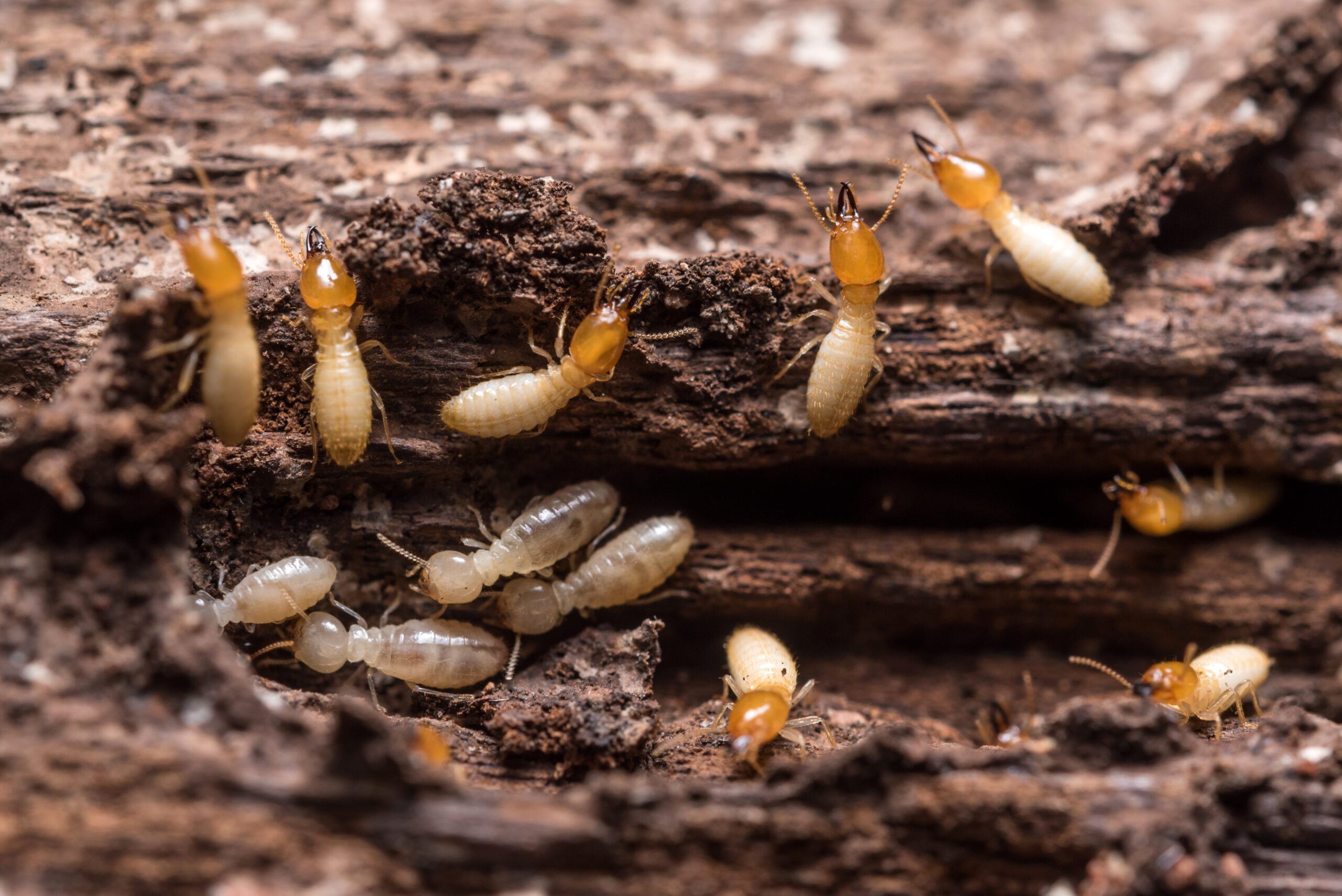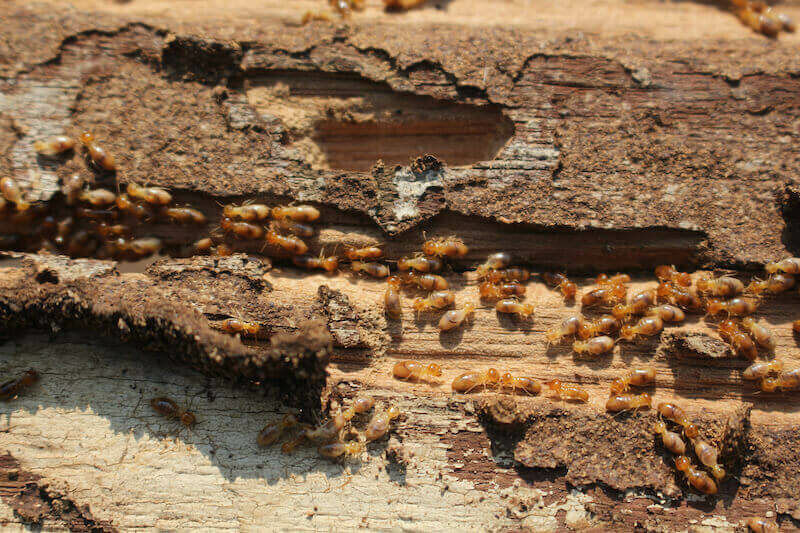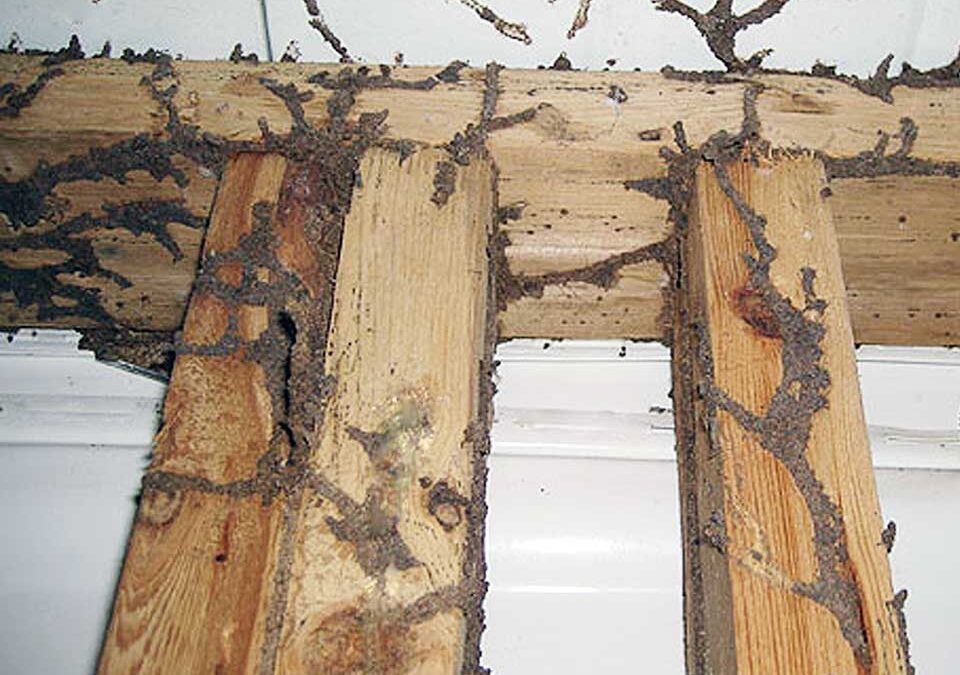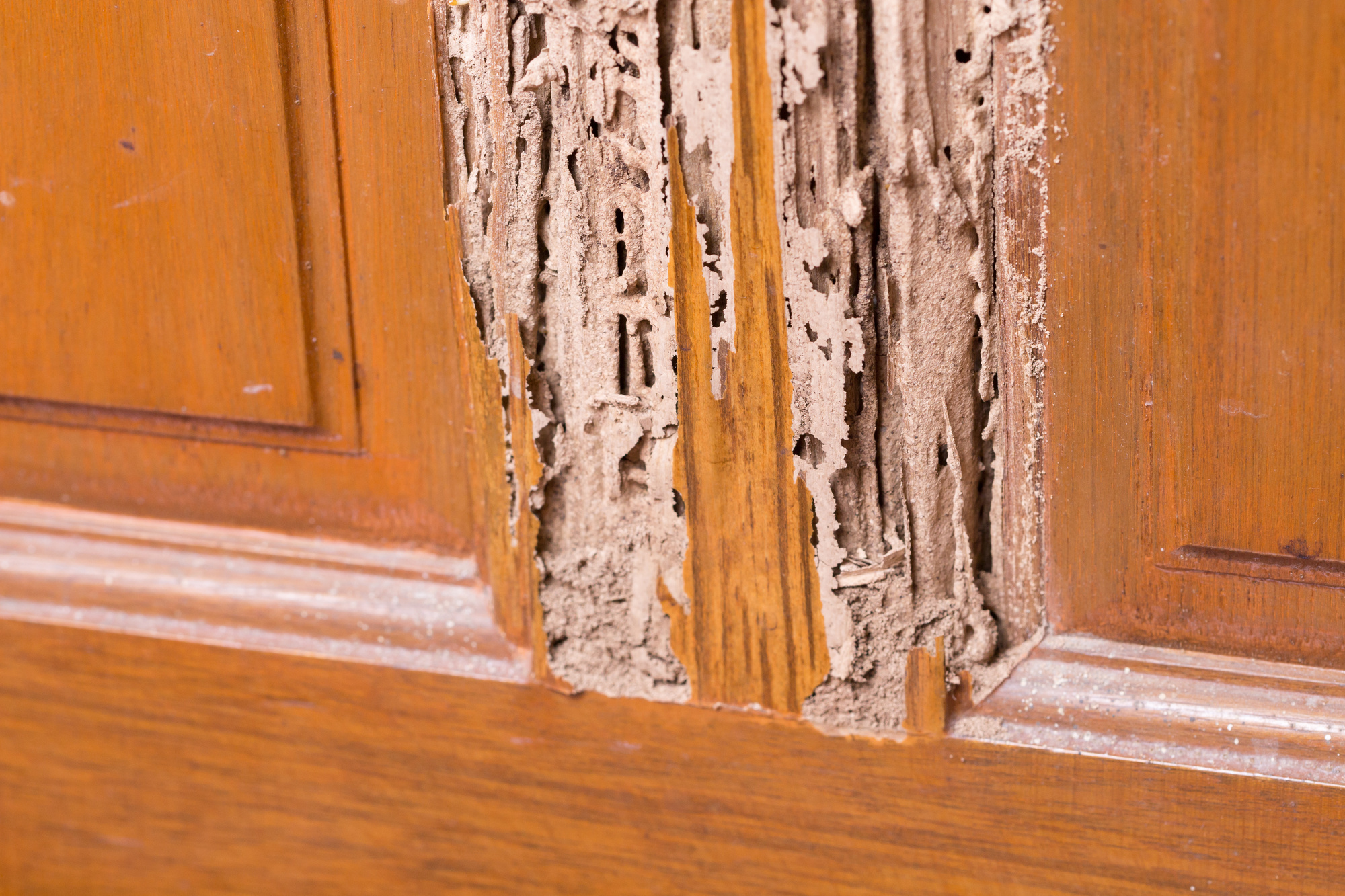Termite Treatments in Florida:
Exterminator Services for Apopka, Plymouth, and Zellwood
Termites can be some of the most devastating pests for property owners, quietly consuming wooden structures from the inside out. In a warm, humid environment like Florida’s, termite populations often flourish year-round. The mild winters, steady rainfall, and abundance of food sources create an ideal haven for colonies to expand, jeopardizing the integrity of homes and businesses in their path. Residents of Apopka, along with those in Plymouth and Zellwood, must stay especially alert for any signs of termite activity, as these areas share the same subtropical climate that allows termites to remain active for extended periods. Proactively arranging termite treatments with an experienced termite exterminator is vital to protecting a building’s structural soundness, minimizing repair costs, and preserving peace of mind.
This service page explains why termites thrive in Florida, how to recognize different termite species, and what goes into a comprehensive termite control plan. By examining each phase—from initial inspection to preventative measures—you can understand why immediate and thorough action is key to keeping these destructive insects at bay.
Why Florida’s Climate Fosters Termite Infestations

- Year-Round Warmth
In many parts of the country, harsh winters limit termite activity for months on end, preventing colonies from expanding quickly. Florida’s relatively warm winters rarely force termites to halt reproduction. This means subterranean termites can remain active underground while drywood termites continue nesting in attics or hidden wood voids, seldom facing the temperature drops that might reduce their populations. - High Humidity and Abundant Rainfall
Moisture is critical for most termite species. In Florida, regular rainfall and humidity levels enable subterranean termites to maintain damp soil near foundations, allowing them to tunnel beneath structures without drying out. It also encourages dampwood termites to thrive in rotted or waterlogged timber. Meanwhile, the humidity inside attics or poorly ventilated crawl spaces supports drywood termite colonies. - Plentiful Food Sources
Florida’s lush vegetation includes trees, shrubs, and wood mulch frequently used in landscaping. This vegetation, combined with wooden home frames, deck materials, and structural supports, supplies a continuous buffet for termites. Any building that sits near thick vegetation or has wooden components in direct contact with soil is especially susceptible. - Minimal Seasonal Dormancy
Termites in colder climates often undergo partial dormancy during frosty periods, reducing breeding and foraging. In Florida, no such lengthy freeze occurs, meaning colonies can keep eating and reproducing almost non-stop. A small incursion can therefore blossom into a massive infestation in just a few months if unaddressed. - Proliferation in Suburban Growth
Regions like Apopka, Plymouth, and Zellwood have seen ongoing construction and development, sometimes unintentionally providing fresh termite habitats. Earth-moving, landscaping, and adding new wooden structures can upset existing termite colonies or attract new ones seeking fresh cellulose sources. Without a termite control plan, even a brand-new building can face unwelcome subterranean visitors.
Common Termite Species in Florida
- Subterranean Termites
Perhaps the most widespread type, subterranean termites live in large colonies beneath the soil, forging mud tubes to reach wood sources above ground. These tubes protect them from open air and dehydration. Subterranean termites consume wood from the inside, often leaving a thin, undamaged outer layer that keeps their activity hidden. Infestations can remain undiscovered until significant damage has already occurred. - Drywood Termites
Unlike subterranean varieties, drywood termites do not rely on soil contact. They can nest entirely in dry wood, such as rafters, eaves, or furniture. Infestations often produce small, pellet-like droppings (frass) that may accumulate on windowsills or below infested timbers. Because they do not need moist ground conditions, drywood termites can colonize higher parts of a home, sometimes making them trickier to spot during a casual inspection. - Formosan Termites
A particularly aggressive subterranean type, Formosan termites form massive colonies and can consume wood at a faster rate than many other species. They spread quickly, constructing intricate mud tube systems that allow them to infiltrate large sections of a structure. If left unchecked, Formosan termites may cause structural weaknesses in a shorter period. Their presence in Florida underscores the importance of early detection and persistent monitoring. - Dampwood Termites
Less common in residential areas, dampwood termites typically settle in logs, tree stumps, or extremely damp wooden structures with consistent moisture issues. Homeowners might see them where wooden siding or structural supports remain wet from leaks or lack of ventilation. Although they are not typically as widespread as subterranean or drywood termites, they can still create localized damage if water problems persist.

Signs of a Termite Infestation
- Discarded Wings
As certain termite castes swarm to form new colonies, they shed their wings. Seeing piles of translucent wings on windowsills, near door frames, or in light fixtures can signal a nearby colony. - Mud Tubes
Subterranean termites craft pencil-thin mud tubes along foundations, walls, or support posts to travel safely between soil and wood. Even a few tubes can indicate the presence of a larger network beneath or around your property. - Hollow-Sounding Wood
Because termites eat wood internally, tapping on beams or boards that look intact may yield a hollow noise if infested. In advanced cases, wood surfaces can crumble under slight pressure. - Frass (Droppings)
Drywood termites often leave behind small, pellet-like droppings resembling sawdust. Noticing tiny piles near baseboards or attic beams might point to hidden galleries within structural timber. - Swarmers (Alates)
Winged termites may be seen flying near windows or doors, especially in warm months or after rainfall. If a swarm emerges indoors, this strongly suggests an established colony inside or close to the structure.
The Importance of Timely Termite Treatments
- Preventing Structural Damage
Termites feed 24/7, and when left unaddressed, they compromise the integrity of wooden supports, floors, or beams. Stopping them promptly can spare you from expensive repairs or even partial reconstruction. - Maintaining Property Value
A known termite infestation can deter potential buyers or drastically reduce a property’s market appeal. Lenders may require termite inspections and clearance before approving mortgages, making thorough termite control essential for real estate transactions. - Long-Term Savings
While treatments do involve an investment, ignoring termites can lead to more extensive damage, driving up costs for both eradication and structural restoration. A comprehensive plan guards your finances against escalating issues. - Safety and Peace of Mind
Living with the uncertainty of termite damage fosters stress. Each new squeak in the floor or shift in the walls might raise questions about structural soundness. Treating and preventing colonies effectively removes that uncertainty, helping you feel secure at home or work.
Our Approach: Termite Exterminator Services
- Inspection and Identification
Professional termite exterminator solutions begin with a thorough inspection. Technicians search for telltale signs—mud tubes, damaged wood, frass piles, or swarmers—and determine which species is involved. This step influences the selection of treatments, as subterranean, drywood, and dampwood termites each require distinctive methods. - Treatment Options
A range of treatments can be employed depending on the infestation severity, species type, and building design:- Liquid Barrier Applications: Creating a chemical barrier around the foundation stops subterranean termites from entering. Technicians dig or trench around the property’s perimeter, injecting a termiticide into the soil.
- Baiting Systems: Bait stations installed at intervals around a structure lure termites, which carry the slow-acting substance back to their colonies. Over time, the colony’s population declines, including the queen.
- Fumigation: For widespread drywood termite invasions, tenting and fumigating can eradicate colonies deep inside wood. This approach saturates all hidden galleries with a gas lethal to termites.
- Spot Treatments: Injecting localized products into known drywood termite galleries in smaller or targeted areas.
- Repairs and Monitoring
If termites caused structural problems, you may need to replace or reinforce compromised wood. Additionally, installing ongoing monitoring stations or scheduling periodic inspections ensures any residual or newly arrived termites are caught early. - Preventive Measures
Termite exterminator services often emphasize prevention, guiding property owners to:- Keep soil or mulch from direct contact with wooden siding.
- Repair roof leaks and ensure attic ventilation to avoid moisture buildup.
- Remove wood debris or stumps close to the foundation.
- Seal cracks, especially near utility entrances or expansions joints.
Such measures create an inhospitable environment for termites seeking new feeding grounds.
- Follow-Up
Termites remain a concern in Florida’s environment, so follow-up checks are a wise precaution. A scheduled re-inspection can detect any re-infestation signs promptly, letting you respond before damage escalates.

Serving Apopka, Plymouth, and Zellwood
Our termite treatments and exterminator services assist homeowners, business operators, and property managers in Apopka, Plymouth, and Zellwood. Regardless of whether you own a newer construction or an older building, Florida’s climate puts you at risk of various termite species. Certain conditions, such as older wood siding or poor yard drainage, can boost the likelihood of a subterranean termite presence, while attics with minimal ventilation can invite drywood species.
- Apopka: This fast-growing area combines suburban development with natural spaces, offering termites plenty of routes to spread if left unchecked.
- Plymouth: A smaller locale, Plymouth still faces moisture-rich soils and vegetation that can shelter termite colonies near residences or commercial buildings.
- Zellwood: Known for farmland and green belts, Zellwood’s environment can foster subterranean termites traveling from field edges to wooden structures, especially where soil remains damp.
No matter your neighborhood, vigilance and quick intervention are key to preventing minor termite sightings from becoming major structural nightmares.
Why Choose Our Termite Exterminator Team
- Local Expertise
Termite activity in Florida diverges from that in cooler states, so we tailor solutions to the region’s climate and prevalent species. Our technicians track the termite cycles common in subtropical zones, ensuring thorough inspections that reflect actual risk factors. - Customized Treatments
Subterranean infestations differ from drywood or dampwood ones, necessitating distinct approaches—from applying soil barriers to tent fumigation for severely infested attics. We craft each plan around your specific scenario, property layout, and termite species. - Safe, Targeted Methods
Modern termite treatment solutions incorporate products that have minimal impact on non-target organisms when used correctly. In setting baits or applying termiticides, we strive to safeguard children, pets, and the environment, placing emphasis on strategic usage. - Educational Guidance
Controlling termites extends beyond a one-time fix. We explain how slight changes—like adjusting outdoor irrigation, clearing wood piles from the yard, or fixing roof leaks—can significantly limit termite attraction. Understanding these steps fosters lasting protection. - Follow-Up Assurance
Because of Florida’s conducive environment, termite watchfulness does not end with a single visit. We often recommend periodic re-inspections or monitoring station reviews to catch any fresh termite activity before substantial damage arises.

Call to Action
If you believe termites are present, or if you spot any of the warning signs—mud tubes, discarded wings, hollow-sounding wood—do not delay. Contact us to learn more or schedule your service. An immediate consultation can reveal the scope of the infestation, letting our termite exterminator team design a targeted approach that swiftly mitigates ongoing damage.
With a thorough, species-specific plan in place, you protect your home or commercial establishment from the devastating effects of unchecked termite feeding. Early detection reduces repair expenses and helps preserve property value, ensuring you do not endure the stress, time loss, and disruption associated with advanced termite problems.
Securing Your Florida Property Against Termites
Termites remain among the most formidable pests in Florida, thriving year-round thanks to the mild winters and high humidity that define the region. Overlooking the early cues—like subtle mud tubes or a small swarm—can lead to hidden damage that worsens over weeks or months. However, with proactive termite inspections, well-chosen treatments, and routine vigilance, you can confidently ward off colonies before they compromise your structure’s integrity.
From physical barriers and soil-applied solutions to advanced baiting systems, exterminators employ multiple tools to adapt to your building’s unique vulnerability points. Tying these short-term treatments into a broader, long-term maintenance plan yields the best results. Minor lifestyle changes, such as removing sources of excess moisture and limiting direct wood-soil contact, act as further safeguards. In a climate as welcoming to termites as Florida’s, consistent watchfulness remains the strongest defense.
By engaging an expert termite control service, you preserve both peace of mind and your investment, regardless of whether you inhabit a single-story home or manage a multi-tenant complex. When combined with the local knowledge of Apopka, Plymouth, or Zellwood, advanced termite exterminator methods offer comprehensive coverage and lasting relief. This integrated approach ensures that you and your neighbors can enjoy Florida’s sun and scenery without worrying about destructive termites silently gnawing away at your property’s foundation.
